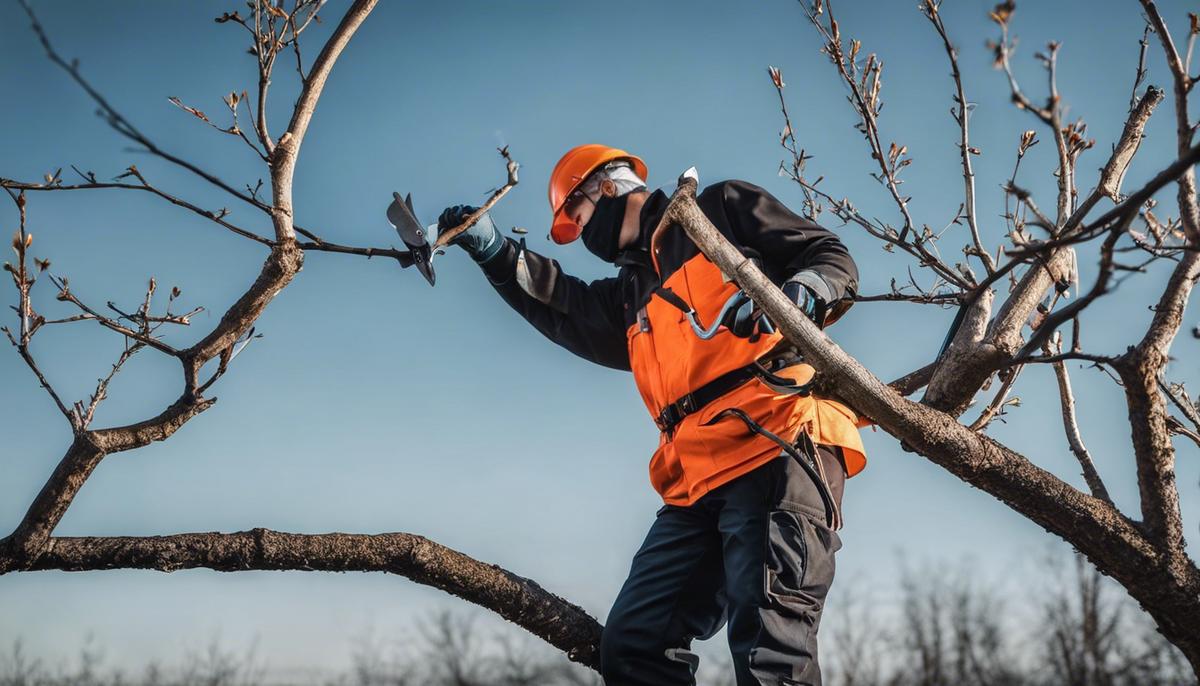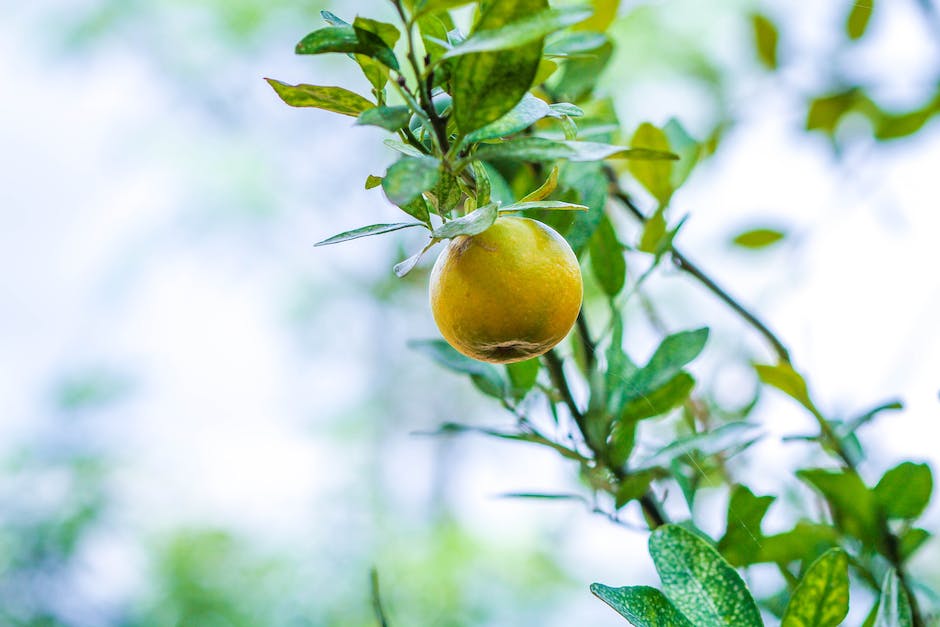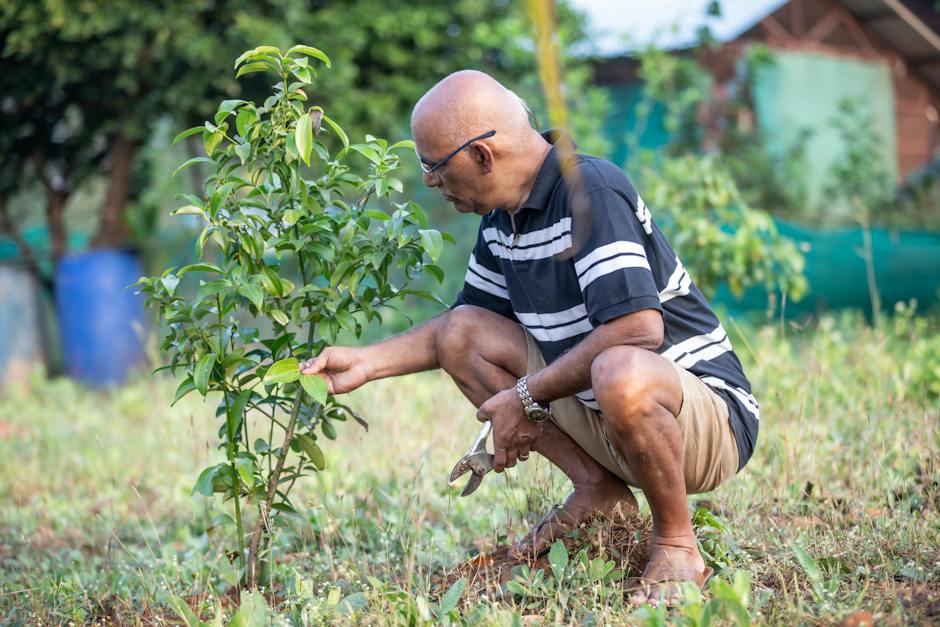Master Guide on Pruning Orange Trees

Pruning an orange tree can significantly influence the tree’s lifespan, health, and fruit production. This process is not merely a task but an art, requiring an understanding of the basics, insight into disease prevention, and knowledge of specific techniques tailored for orange trees. Equipped with the right tools, a keen eye for timing, and the ability to perform accurate cuts, anyone can venture into this crucial aspect of orange tree care. Additionally, being aware of the signs of disease during pruning and knowing how to properly sanitize your pruning tools can dramatically diminish the risk of introducing harmful elements to your tree.
Understanding the Pruning Basics
Mastering the Art of Orange Tree Pruning: Basic Principles for Vibrant, Lush Citrus Harvests!
Basking in the glowing sunlight, producing fruits filled with zesty sunshine and refreshing goodness, orange trees can brighten any garden! While these citrus stunners generally require low maintenance, a bit of tender, loving care goes a long way – particularly when it comes to pruning. Rest assured, this art isn’t as daunting as it may seem. With the right knowledge, anyone can hone the skills to prune their beloved orange tree efficiently, aiding not only its growth but also enhancing the yield of those zingy orbs we adore so much.
To get started on this exciting journey of tree care, let’s delve into the fundamentals of pruning orange trees.
- Right Timing is Essential:
- The start of the year can be an optimal time for pruning, usually between January and early February. Ideally, this happens after the last frost but before new blossoming begins. Do remember to avoid pruning during the hot months as this can stress the tree and impact its fruit production.
- Identification of The Right Branches:
- One of the key aspects of pruning is discerning which branches to trim. Dead branches, those infested by disease or pests, or branches that are crisscrossing should be removed first. Suckers, or water sprouts–fast-growing shoots sprouting usually from the tree trunk or old branches–also require immediate removal.
- Making Correct Cuts:
- Take note that all pruning cuts should be clean and smooth to minimize the duration of healing. Slant the cuts away from the tree trunk with the cut surface facing downwards to avoid accumulation of water. And remember, less is often more. Restrict pruning to 20% or less of the tree canopy in a pruning cycle.
- Thinning for Improved Sunlight Penetration:
- Thin out dense branch clusters, creating ample space for sunlight to penetrate through the leaves, which immensely helps with photosynthesis, the lifeline of any tree. It, in turn, significantly boosts the health and productivity of your orange trees.
- Maintain Tree’s Overall Balance:
- Ensure the tree retains a balanced shape post-trimming. Uneven trimming may lead the tree to have an off-center gravity that could weaken its structural integrity over time.
- Sterilize Your Pruning Tools:
- Disinfect pruning tools between each cut, especially when removing diseased branches. A simple wipe-down with rubbing alcohol prevents the spread of disease and safeguards the tree’s health.
- Water and Fertilize:
- Finally, post-pruning, provide your tree with sufficient water and a good dose of slow-release, high-nitrogen fertilizer to aid in its recovery.
Embrace these simple yet effective principles of pruning, and watch your orange trees burst with vibrant, wholesome fruits. Pruning your orange trees isn’t only about tree management. It’s a testament of love, care, and devotion that turns fruitful in the most literal sense! Dive in, and let gardening not only cultivate your yard but also cultivate your soul.

Photo by socialcut on Unsplash
Disease Prevention in Pruning
The Crucial Role of Proper Pruning in Warding Off Orange Tree Diseases
A flourishing orange grove is a sight to behold, with its vibrant blossoms in the spring and bright fruit come harvesting time. As ardent cultivators of this citrus delight, one quickly learns the pivotal role consistent and correct pruning holds not just in promoting extensive growth but also in acting as a significant line of defense against a myriad of diseases. Let’s deep dive into how proper pruning can make your orange trees thrive and stay spick and span, health-wise.
Pruning plays a critical part in mitigating disease susceptibility in orange trees. During this process, you’re making intentional cuts to remove dead or diseased wood and thin out overcrowded branches, which aids in increasing air circulation and sunlight penetration. Both factors are essential in preventing conditions like root rot or leaf spot diseases. Creating an environment that has plenty of air and sunlight not only inhibits the growth of harmful fungal pathogens but also enhances the overall health of the tree, thereby fostering stronger resistance to disease attack.
Remember, pests and diseases often find an excellent refuge in dead, damaged, or diseased branches. Routine pruning is thus invaluable as it eliminates these disease harboring spots, curbs the disease from spreading to the healthy parts of the tree, and aids in establishing a more robust, disease-free plant. It’s like providing your orange grove with a built-in health guard!
Furthermore, the removal of any cross-growing branches during pruning is critical in thwarting diseases. Such branches can rub against each other, causing wounds that act as the entry points for various pathogens. Prudently removing these branches bestows your trees with an added layer of protection.
Let’s not overlook the essential task of collecting and disposing of the pruned material. Any fallen branches or foliage can be a potential breeding ground for a host of disease-carrying organisms, making it imperative to clear them away promptly and properly.
The tree’s energy allocation is another fascinating facet to consider. An unpruned tree tends to dissipate its energy throughout its structure, including weak, dead, or overcrowded places. However, receiving a proper pruning job redirects this energy into fewer, healthier, and stronger branches and fruit production, translating into a hardier tree able to insulate itself against the onslaught of diseases more effectively.
In summary, don’t underestimate the power of the prune; it’s much more than just an aesthetic exercise! It’s a strategic and significant preventive measure to keep those nasty diseases at bay and ensure your oranges grow as healthily as possible. So don’t hesitate to clip, cut, and clear – your trees will thank you with a bountiful harvest and disease-free life.

Pruning Techniques for Orange Trees
Unlocking the Magic of Pruning: Essential Techniques to Avail the Best from your Orange Tree
Moving forward from the basics of pruning, let us delve into the more specific techniques that you can employ to ensure your orange tree thrives, provides a bumper harvest, and remains hale and hearty for years on end.
Keeping in mind the aspects of timing, selecting the right branches to trim, ensuring the right pruning methods, managing dense foliage, maintaining a balanced tree structure, proper tool sterilization, and timely provision of water and fertilizer, we’re ready to explore some more advanced techniques.
- Directive Pruning: Champion the growth of your orange tree with directive pruning. This involves deciding a ‘leader’, selecting the main branch you want to grow taller or wider, and making your pruning cuts accordingly. It focuses the tree’s vital energy towards strengthening that chosen branch, stimulating vigorous growth, and ultimately, better fruit yield.
- Skirt Pruning: Skirt pruning is critical for an orange tree’s health. It involves trimming the lower-hanging branches to maintain a distinct clearance between the canopy’s lowest branches and the ground. This technique facilitates better air circulation, prevents the spread of pests and diseases, and guards the tree against ground moisture, thereby deterring potential root harmful fungi.
- Watersprout and Sucker Management: Watersprouts (shoots that grow straight up from a branch) and suckers (shoots growing from the base of the tree) can drain the tree’s resources, leading to smaller fruits and jeopardizing the overall health of the tree. Regularly monitor your tree for these growths, and promptly prune them as they emerge.
- Pruning for Fruit Size: The number of fruits a tree produces is inversely related to the size of the fruits. If you desire larger oranges, consider thinning out the number of fruits on the tree. This pushes the tree’s resources into fewer fruits, thus leading to plumper, juicy oranges!
- Pruning the Canopy’s Periphery: This ensures that sunlight reaches every part of your tree, benefitting the hidden lower branches that can often get overshadowed by the upper layers’ dense foliage. This method aids in the photosynthesis process for a richer production of sweet oranges.
- Bark Protection Pruning: To protect the bark and avoid sunburn, prune the overhanging branches in a way that allows dappled sunlight to filter through. This maintains a cooler temperature and leads to a healthier trunk.
Each of these techniques contributes to yielding a healthy, flourishing, and productive orange tree. Remember, pruning isn’t just snipping away aimlessly but involves a thorough understanding of the tree’s biology and respecting its inherent growth mechanisms. Pruning is more than a gardening chore; it is a blend of science and art that harmoniously work together to benefit both the tree and the cultivator.
So, celebrate your orange tree’s growth journey, embed these techniques into your gardening regimen, and witness the magical transformation of your orange tree.

Embracing sound pruning methods specifically shaped for orange trees allows us to make the most out of our trees. Not only do these techniques help us to manage the complexity of size but it also ascertains an improved and consistent yield of fruit. Moreover, learning to read the possible disease signs while pruning accounts for early prediction and prevention of pest infestations or diseases. This holistic approach not only enhances our tree’s health but also extends their fruitful lives. The delights of owning an orange tree go beyond the fruits it bears, it extends to the gratification that comes from taking care of it the right way.



